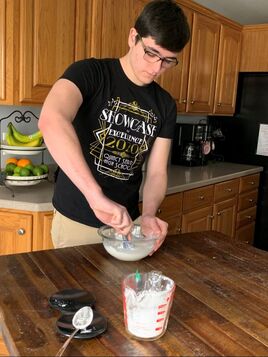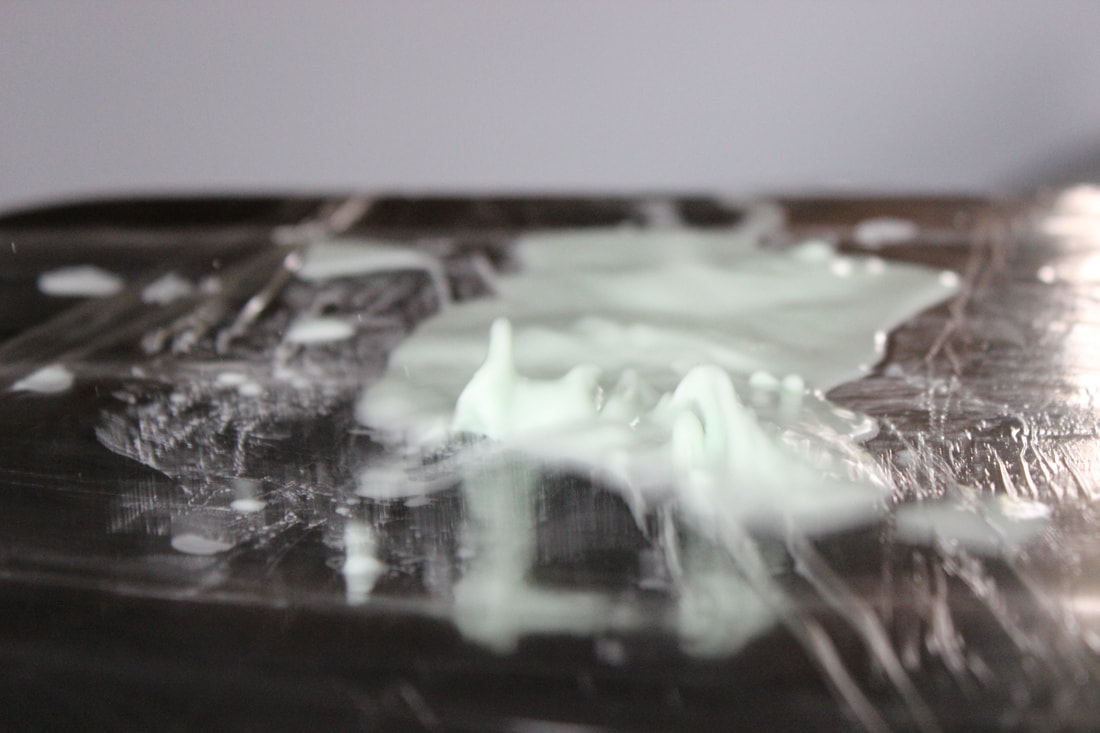|
Is it a liquid or is it a solid? Oobleck! Thank you Paige and Gavin Schumacher for providing this fun activity! Paige is 17 and a junior at QHS. Gavin is 14 and a freshman at QHS. It’s sometimes difficult for my brother to agree with me on a project, but we’ve always loved doing an activity that mixes art, science, books and a mess! You may have heard about oobleck in science, but we first read about it in Dr. Seuss’s book Bartholomew and the Oobleck. In the story, the king wants something new to happen. The result, a magician makes oobleck fall from the sky and it’s impossible to remove (except through the power of a sincere apology, of course.) While not magical, this homemade oobleck is even more amazing. This project is fun for families of all ages and clean-up is just hot water and a rag! So, get to making your own oobleck!  Materials: One cup of water Two cups of corn starch Food coloring Instructions: 1. Slowly mix the water and corn starch in a large bowl using a spoon. If the mixture seems a little dry, then you can add a little bit more water. Note: As we get close to adding all but half a cup of corn starch, we start mixing using our hands! We recommend this method so you can tell when the mixture is the correct consistency. The perfect mixture will be a liquid when you pour it, and a solid when you grab it. 2. Once you feel you have the right consistency, add a few drops of food coloring and stir with your hands until it is mixed. We are using green food coloring like in the story, but you can use any color you want. Now you are ready to play! You’ll notice that oobleck is a substance that is a liquid. However, when you pick it up, as long as you are pushing on it, it will stay a solid. Try rolling it into a ball, what happens? You’ll notice that as soon as you let go, the oobleck turns into a liquid and runs through your fingers. You can try to use spoon to pick it up; it will be hard to do. But pour the Oobleck into another bowl, and it will quickly pour out. This is happening because it is a non-Newtonian fluid. It doesn’t follow the viscosity rules of a fluid, but it’s not a solid. For oobleck, the viscosity is dependent on the applied pressure or shearing forces. When there are no stresses to the material, oobleck flows easily, like water. However, when external forces are applied, such as smacking it with your fingers, the viscosity increases. The explanation is that the water molecules are squeezed out from the cornstarch particles, causing the substance to become rigid. Taking it to the next level: Visualize Sound We wanted to make this a little more advanced, so we decided to see how the oobleck would react to sound wave vibrations. We tried this in a glass dish and a pie pan, but in the end, the best way we found was to carefully put the oobleck directly on clingwrap that is draped over the center of the subwoofer speaker. You will need music with a big beat. At first you’ll notice the liquid vibrates a little. As the sound creates bigger vibrations, you can visualize the sound waves. The oobleck dances around! This is a great time to talk about how sound waves travel through the air, move into our eardrums, and create what we hear by vibrating. Arts Quincy is America’s First Arts Council and depends on the generosity of donors like you! If you’d like to support our mission to bring arts access to the community for as little as $5/month, please visit artsquincy.org/support-us.
0 Comments
Leave a Reply. |
Archives
June 2024
Categories |


 RSS Feed
RSS Feed
